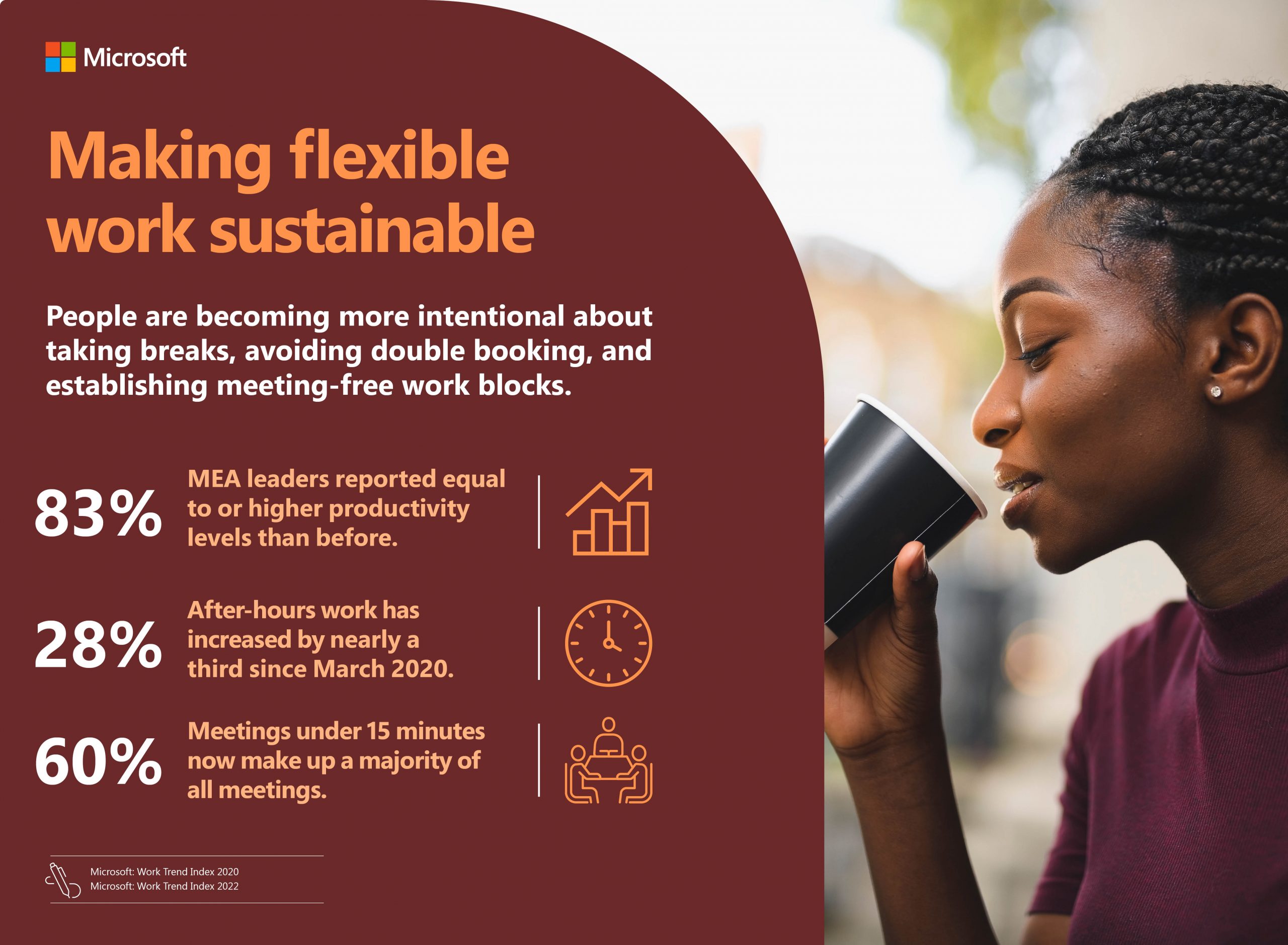Not too long ago, we would leave our offices at the end of a day and in most cases, it was difficult to bring work home with you. In recent years, however, mobile smart devices and the software that powers them has made it easy to pick up our workday and pop it into a laptop bag before heading home. Pair this with emails and instant messaging apps, and it’s never been easier to reach someone after business hours.
According to the International Labour Organization, a number of employees in the Middle East and Africa (MEA) are at risk of working more than 49 hours a week. As for after-hours emails, a recent survey of South African professionals found that 36 percent of workers were likely to send replies after 5pm.
We might think that this has only been the case over the last two years, but the signs were there long before the pandemic. One study of working patterns of GitHub users found that before the pandemic, it was not uncommon for weekend work to account for 20 percent of users’ working hours. The last two years have made us more aware of how digital exhaustion is a mounting problem.
Microsoft’s latest Work Trend Index reports a rise in meetings and chats, often spilling over the traditional 9-to-5 workday. Anonymized productivity signals across Microsoft 365 have shown that the average Teams user’s day has increased by more than 13 percent (46 minutes). After-hours work is up 28 percent and weekend work has increased by 14 percent. Meetings still consume the lion’s share of our time – the average Teams user saw a 252 percent increase in their weekly meeting time since February 2020.
While this data demonstrates a need for teams to address the digital overload, there’s evidence to suggest that people are taking control of their time in other areas. Anonymized productivity patterns in Outlook show people are becoming more intentional about taking breaks, avoiding double booking, and establishing meeting-free work blocks. It also appears that team meetings are starting later on Mondays and wrapping up earlier on Fridays, and more employees are using their vacation time, with out-of-office blocks in calendars increasing by 10 percent in the last year.
Taken altogether, the data indicates that employees are doing what they can to make flexible work their own but making flexible work sustainable in the long-term will require new team norms to guard against being “always on.” This should not be a solo effort, but a team-led movement to establish more sustainable hybrid practices.
Managers need to work closely with their teams to set boundaries around when it’s time to work and when it’s time to rest. Tools like Microsoft Viva Insights can help provide team members and their managers with the right data and insights to learn and share best practices to help bring balance to work and life. Viva Insights provides recommendations to individuals so that they can take action, and then use advanced insights to measure the impact of their actions. For managers, these insights into their team are anonymized, but will provide enough of an overview of after-hours work and time spent in meetings. It’s this toolkit that will help managers build a set of best practices for their teams to ensure a sustainable hybrid workplace.
The latest Work Trend Index has shown that employees value flexibility and wellbeing, and these great expectations create an opportunity for business leaders and their organizations to reimagine work. Integral to this will be establishing new practices for sustainable flexible work for all.





